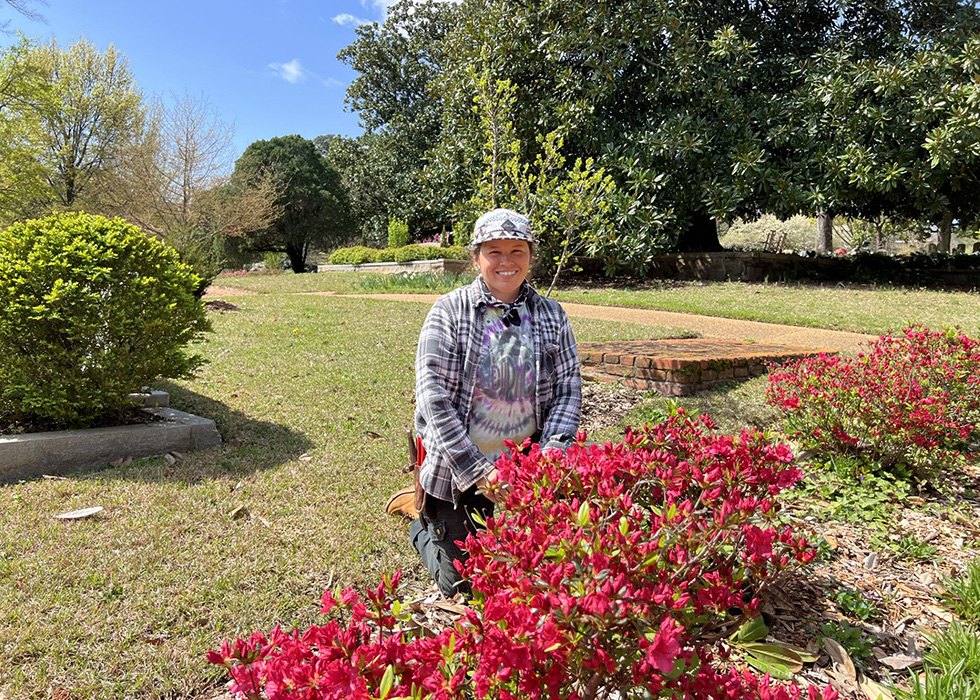
The Garden is Waking Up
Our winter-blooming camellia, Camellia japonica, is coming into full bloom throughout Oakland’s gardens. Its habit of blooming during the coldest months is one reason it has been loved in southern gardens for many generations. The white, pink, red, or patterned flowers add color to the winter garden and they provide fresh flowers to bring inside.

Native to Japan, they have been cherished for centuries. It is widely accepted that the first Camellia japonica plants arrived in London in 1739 aboard an East India Company ship carrying plants of Camellia sinensis, the tea camellia. The hope of establishing tea plantations in England was unsuccessful but the striking beauty of C. japonica assured its popularity. There is great debate over when and where camellias arrived in America but it wasn’t long before they were seen in gardens throughout the south. We are searching for antique varieties and including them in Oakland’s gardens. You will find them throughout the gardens, often accompanied by their fall-blooming cousin, Camellia sasanqua.

Another showy winter bloomer is Prunus mume, the Japanese Apricot, which is also in full bloom. Native to China and Korea, where it has been cultivated for 1500 years, and long known in Japan where it is highly valued as an ornamental, Prunus mume was introduced to Britain in the mid-nineteenth century when some double-flowering Japanese cultivars were imported. These small trees are still hard to locate in nurseries but are gaining in popularity because of the beauty of their white or pink, spicily fragrant flowers. The flowers drop after a hard freeze but more buds open in a few days. The small, hard fruits that follow are bitter and unappealing to our palate, however, it is enjoyed by many birds. Most of the plants at Oakland are along the road near the Bell Tower but others scattered are about.

Last, but certainly not least, are the Hellebores. Properly Helleborus x hybridus, they are commonly called Lenten Roses. The large, leathery leaves of this evergreen perennial are a welcome addition to a shade garden, but the beautiful flowers are what make it special. As pretty as they are, hellebores were first grown in gardens for use as a purgative (note: they are poisonous if ingested) but their beauty was obvious and they quickly became popular as ornamentals. In 1900, Liberty Hyde Bailey said “There are numerous varieties of this beautiful species.” We have planted them in many shady areas of the grounds but they are easiest to see on the bank under the Chinese Chestnut outside the Bell Tower and on the Chosewood lot just inside the new gate on East Hill.
Oakland is a beautiful place for a winter walk. Pick a pretty day and come enjoy the gardens. You will see these and many other flowers telling you that spring is on its way.



